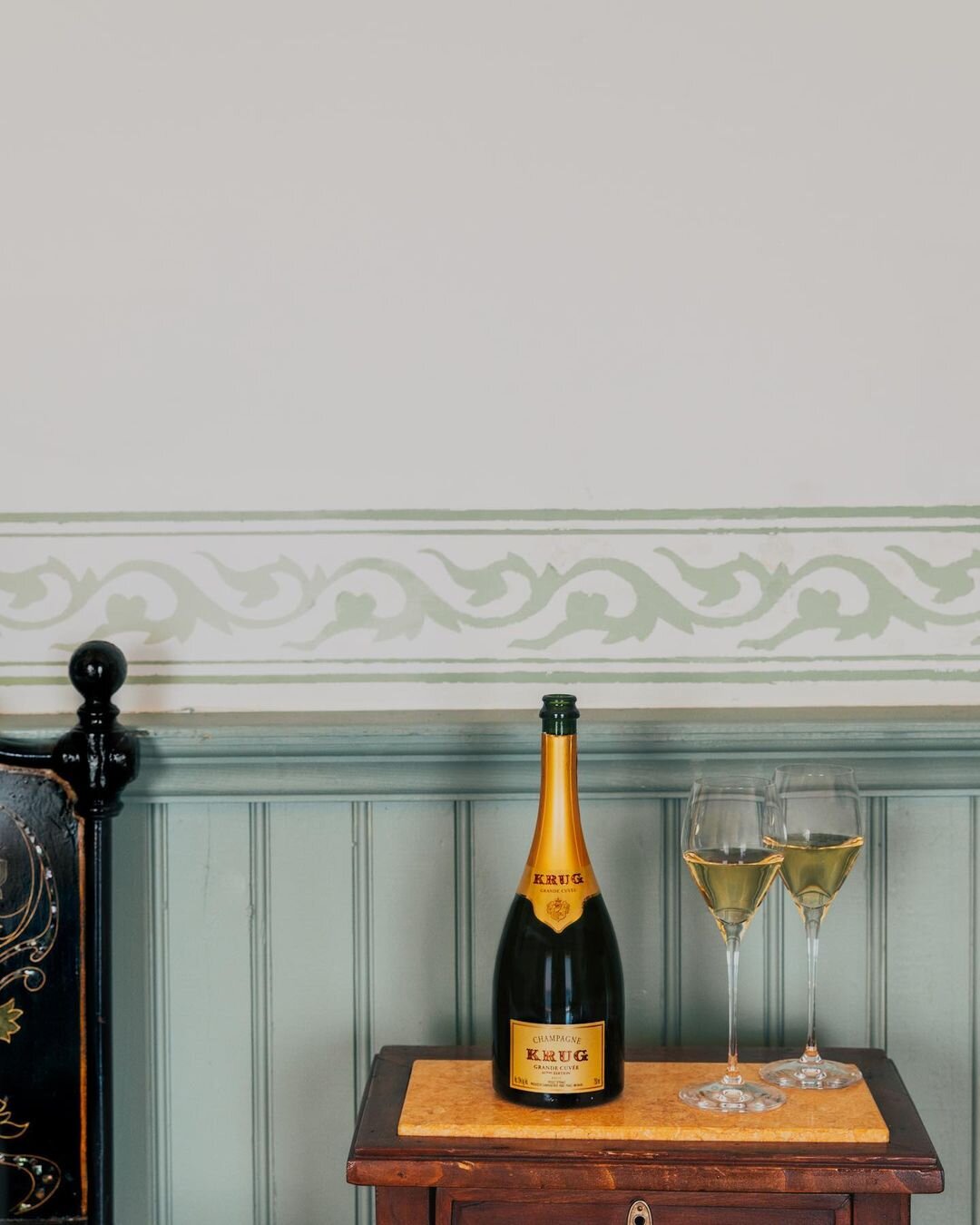This Is What Makes Champagne so Luxurious
Image: @krugchampagne
Champagne, often referred to as 'liquid gold', has become a symbol of the elite over the centuries. The sparkling sensation once sipped by French aristocrats in the 1700s has since become a billion-dollar industry with over 300 million bottles produced each year.
But what warrants the price tag on a bottle of bubbles from this renowned region? We looked to the land, the history and method to find out.
The Region
The term 'Champagne' is often thrown around when referring to sparkling wine, but if the wine is not from this legally defined region—including the Aube, Côte des Blancs, Côte de Sézanne, Montagne de Reims, and Vallée de la Marne districts—then it is not Champagne.
The historical province of Champagne is located approximately 150km east of Paris and covers 84,000 acres of land. The region has a rich and turbulent history, situated perfectly in the path of armies marching toward Paris. As the area transformed into a battlefield, locals allegedly took to the cellars, hiding from enemies whilst protecting rare bottles of bubbly.
There are hundreds of wine regions worldwide, so what is it about Champagne that makes the wine so special?
One factor that plays a part is the region's climate, and—surprisingly—the fact that it is not optimal for growing grapes. Champagne is a lot cooler than most wine-producing areas in France with an average temperature of around 10ºC. Whilst this cool weather contributes to creating just the right acidity, it also means that these treasured vines are at a far greater risk of being ravaged by the frost, making every batch all the more precious.
The Method
Unlike a lot of wine that relies on advanced technologies to speed up processes and aid in mass production, Champagne grapes are harvested by hand. Part of the regulation of champagne means using machines is prohibited by law.
This practice contributes to the hefty price tag and helps ensure that only the best grapes, picked at peak ripeness, are selected.
The process of making champagne is also the most complex and time-consuming of any wine in the world. It is produced by "méthode champenoise" or "méthode traditionelle" that includes two rounds of fermentation.
First, the grapes undergo primary fermentation in oak or stainless-steel vats. In this initial process, the winemaker takes various wines and blends them to create a 'cuvée'. Yeast and sugars are then added to the wine to initiate the second fermentation before the wine is bottled and stored horizontally for a minimum of 15 months.
Not all champagnes are created equal. There are three variants: Non-vintage, vintage and prestige cuvee. Non-vintage wines are made using grapes from various years, whilst vintage wines are made using grapes harvested in a specific year. Prestige cuvée is made on a much smaller scale using only the best grapes from the best vintages. The scarcity of this wine also means a higher price tag.
Sparkling wine, although comparable, does not hold the same gravitas as it’s classier counterpart, Champagne. To help you live like royalty, we have scoured this prestigious and protected region to find 3 of the best champagnes perfect for your next celebration.
3 of The Best Champagnes
Dom Perignon Vintage 2009
Image: Vintage Cellars
Made by Moët & Chandon, Dom Perignon—a vintage only champagne—is regarded as one of the world's most famous champagnes. The Dom Perignon Vintage 2009 described as sunny, bold and majestic, is a champagne both rich and restrained in flavour with notes of stone fruits, guava and spicy, green grapefruit zest.
Bollinger La Grande Année 2012
Image: Wines.com
Bollinger is a Champagne house that dates back to the 1800s when an adventurous aristocrat and two wine enthusiasts joined forces to launch Renaudin-Bollinger & Cie. The house has created some of the finest champagnes over the centuries, including Bollinger La Grande Année 2012: A wine delicate in colour with notes of apricot, almond and honey with a refined, silky finish.
Krug Vintage 2000
Image: Krug
Krug was established in Reims in 1843 by Joseph Krug—a man devoted to crafting the very best champagne he could offer, every single year. Krug Vintage 2000 is one such example. Nicknamed 'Stormy Indulgence'—this champagne is both rich, complex and indulgent with an intense golden colour, flavours of citrus-fruit gratins and aromas of caramel, nougat and freshly baked pastries.
Have you heard? A European-style market is coming soon to Sydney!
Author Bio:
Jennifer Palframan
Jen is a South Africa born, Sydney-based lifestyle writer and blogger. She is a long-time word lover and storyteller—passionate about travel, tech, fashion, and food.
Sign Up to receive the latest updates and exclusive invites to luxury events.
-
Ferrari Is Shifting Gears Into Fashion and Lifestyle https://t.co/nF6JM2zLHH
-
The Hidden Meaning Behind Gucci’s Double G Logo https://t.co/eTr1w2wx3n
-
Elsa Peretti Steals the Show in Netflix's Halston Series https://t.co/ogveT20TLy
-
Check out this New Futuristic Eco-Luxury Hotel Concept https://t.co/L3PdNHA6oM
-
These Marble Wine Coolers will Make You Feel Like Royalty https://t.co/z2Yjh2PXqh



















Everyone loves a collab.